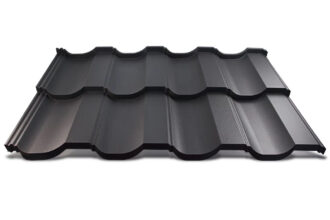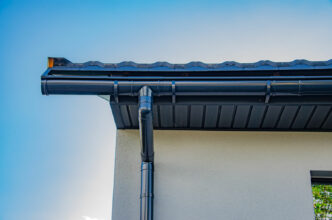Since prehistoric times, when humans left caves and needed some protection from rain, the history of roof and roofing begins. The first roof coverings were therefore sticks, leaves and animal skins. With the development of mankind, roofing materials also developed. Let us trace the history of roofing and the most important turning points that have led roofs and their coverings to the forms in which they occur today.
First ways to protect against rain in prehistory
Caves were the first households. As people left, they needed ways to shelter from the rain. The roofs and shelters made of sticks, poles, leaves, grasses, heathers and animal skins are considered to be the first roof structure in the history of mankind. These materials can therefore be considered the first roofing materials.
Roofing in antiquity
The first development of roof structures was, found in pit-houses, single-pitched or multi-pitched roofs reaching the ground. When houses started to come out of the ground – perpendicular walls were formed, and structures began to resemble today’s frame and ceiling structures. At that time, roofs were covered mainly with soft materials such as straw, reed, grass or heather.
A shingle roofing principle is considered the first innovation in the history of roofing. For this purpose, processed wooden shingles and chipped stone plates were used. Around 1000 BC, the first profiled tiles were used. The oldest tile mounting system was monk and nun, which the ancient Romans spread throughout the Mediterranean. Another milestone made by the ancient Romans in the field of roof construction was the use of concrete in the dome roof of one of the most important buildings in this beautiful city – the Pantheon. But some Roman inventions have been forgotten for many centuries.
The development of roofing in modern times
The greatest development of building techniques has been progressing since the 13th century. In terms of roofing in medieval cities, thatch was replaced with tiles, primarily due to the risk of fires. Around 1600, the development of frame structure ended, and, aside from decorative elements and materials, the most important construction assumptions of the houses have not changed until today.
The 18th century dates back to the reinvention of concrete – a mixture of fine and coarse aggregates. French engineers: Belidor, Monier and Lambot played a large part in this invention. In 1824, the production of Portland cement was patented by the Englishman Joseph Aspdin. From 1844, the production of cement roof tiles was popular in Niemcza, and Adolf Kroher played an important role in the process. Cement tiles at the turn of the 19th and 20th centuries became the most frequently used roofing material in England, where their production was automated.
At the beginning of the 50’s, a very important breakthrough in the technology of roofing tiles production took place. After the end of World War II, due to the enormous damage, there was a great demand for all building materials, including tiles. Rudolf Braas – a German entrepreneur developed then a technology that enabled the mechanisation of the production of roof tiles.


